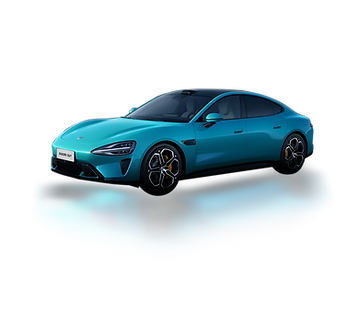
UX Designer
During my time at the Zeekr Design Studio, I was responsible to enhance the overall user experience of the Stargate, a 90-inch headlight that goes from side-to-side of the front of the vehicle and has 1711 LED beads. To achieve that, I used the Design Process tools, including market analysis, benchmarking, user studies, constructed wireframes, made low-fidelity prototypes, analysed quality surveys, did in-vehicle testing and much more.
My role
My main goal in this role was to create entirely new experiences for the user through the Stargate or enhancing already existing ones to improve the user's usability of the Stargate. This was done because the Stargate had a lot more potencial than what it had so far and the user could benefit a lot more from it.


The cars
Stargate is an optional feature when buying a new Zeekr car. It can be added on the follow vehicles at the moment: the 007, the 7x and the MIX. As it is an optional add-in, it is important that all its' capabilities be clear for the user and that they can see great value in it. This is why my role was so keen: to increase the usability and functionality of Stargate to the user.
Screen integration
Enhancing the integration of the Stargate functionalities into the CSD was a big part of my day-to-day activities as well. In principle, Stargate has its' own application "Light App" in the CSD to control its' different functionalities, but it could be much better integrated to make it simpler to the user.


The dedicated app
There is a "Light App" on the CSD that is dedicated to control all Stargate's functionalities, like activating Light Shows, changing different driving headlight signatures, triggering greetings to people outside the car, writing messages to be written on the LED band, and so on. This app was also explored in how it could be executed in a better way for the user.
Workshop
I did an internall workshop gathering all people in the team to brainstorm ideas on new different ways we could enhance Stargate's functionalities and usabilty to our users. This was done at the beggining of this journey, to assess early what was the scope of what would like to implement in the long term. Many good ideas were brought from this workshop and will endup in the users' hands.

Competitor Analysis
I consistently conducted competitor analysis to understand market needs and trends, responding to a competitor launch directly or examining specific functions across different brands. One notable analysis focused on the dedicated app, where I thoroughly examined the UX and HMI implementation in all direct competitor cars equipped with this feature.
Xiaomi SU7

IM L7

HiPhi X


Avatr 11

Luxeed S7
Cross-teams aligment
There were different Design Studios involved in this project, so part of my role was to sync and maintain a good communication between all the stakeholders involved to make sure that everybody was up-to-date on what was going on and also make sure the end goal with the product was consistent. One big part of this was the alignment between the Design Studios in China and in Sweden, which was done both in a day-to-day basis and through a weekly meeting that allowed the stakeholders to align on content and feature development as one large team.

9
New features introduced to Stargate
of which:
1
feature already scheduled for delivery on the next OTA
7
features accepted for implementation and in discussion on the technical feasibility of it
1
feature rejected due to budget limitation
Achievements
By the end of the project, I introduced 9 unique Stargate features This kind of delivery rate has never been seen before for the development of Stargate features.

Challenges
There were many challenges that were present during this project, but some of them can be described as:

Ownership
Who had the ownership over Stargate was unclear, which meant that the process was slow and harder to ensure consistency across all vehicles.
Bureaucracy
A lot of time was spent in bureaucracy, which meant that any new proposal took a lot longer than it should have. So I proposed that the process should be done in a more streamlined way with only a few key stakeholder taking a decision as possible.
Responsibles
Due to a division of responsibilities into very specific parts, it was often very hard to identify who was the responsible for each topic
Budget/resources
There is always a lack of budget or resources in this big/worldwide projects. So features required a long time to be pushed out, by which time customers are already frustrated or receive no new features at all. So, I proposed that budget and resources must be allocated and prioritised for each project.